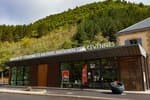
The cliffs of the Causse Méjean
5 points of interest
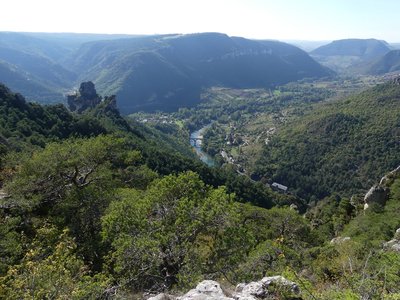
Vallée du Tarn - N Thomas  History
HistoryLe Rozier
The village of Le Rozier (formerly called Entraygues, meaning between the waters) lies at the confluence of the Tarn and the Jonte. According to Philippe Chambon, “on 12 July 1075, Déodat de Canilhac, Raimond de Mostuéjouls and Bernat de Peirelau left to the abbey of Aniane the plots of land belonging to their respective seigneuries located where the current village stands”.
For some, the name of the village comes from the name of the parcel of land on which the priory of Saint-Sauveur was built, the “Camp de Rosario”; for others, it has its origins in an Asian rose variety introduced and grown here by the monks (…)
The human presence at the Le Rozier site is ancient: in the Gallo-Roman era, a pottery workshop existed at the confluence of the two rivers. Its ceramics were similar to those of Graufessenque (Millau).

Capluc - NT  History
HistoryCapluc
Capluc was once a defensive and surveillance site, with a castle that (like many of the village’s houses) no longer exists. Some of the houses were renovated once a track suitable for motor vehicles was opened to the hamlet. The name Capluc is believed to come from cap and luz, meaning head and light, thus symbolising the place illuminated by the first rays of the rising sun.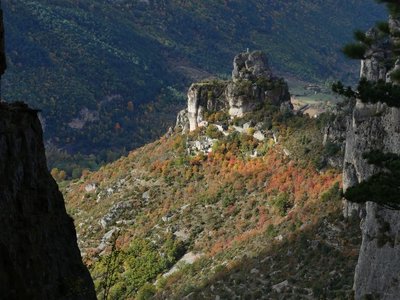
Capluc et son rocher - NT AgricultureCapluc and its terraces
As you leave Capluc, you become aware of how the site, which at first sight seems barren, has in fact been shaped by humans. All of this south-facing slope, which is protected by the tall dolomite cliffs, was farmed using terraces (grains, fruit trees, grapevines). Temperatures are so favourable that the most southern Mediterranean vegetation of the region grows here (narrow-leaved ash, jasmine, Montpellier maple, holm oak, etc.).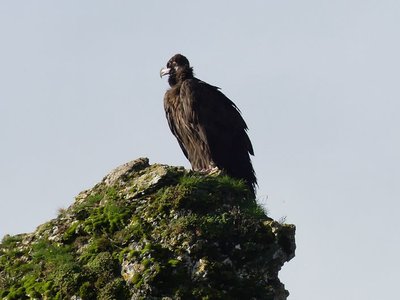
Le vautour moine - nathalie.thomas  Fauna
FaunaVultures
You are close to the historic site where the griffon vulture was reintroduced from 1982 onwards. Since then, the cinereous vulture (1992) and the bearded vulture (2012) have also been reintroduced. The Egyptian vulture returned of its own accord in 1986. It nested locally in 1997, but it remains rare and very localised in this region. In the Mediterranean basin, the presence of vultures is associated with sheep farming and herd mortality.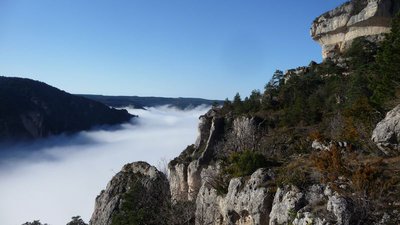
Les corniches de la Jonte - nathalie.thomas  Landscape
LandscapeBalcon du vertige (vertigo balcony)
This site, almost 400m above the bed of the Jonte, deserves it name. It is the only spot on the walk from which you have such breathtaking views over the gorge. Opposite you is the Causse Noir, with a heavily fissured rock in the foreground, the Ranc del Pater, on which remain some wall sections of Saint Michael’s hermitage (former château of Montorsier). The tall rectangular cliff on its right is known as Roc Fabié. If you lean forwards, you can see, from upstream to downstream, La Caze and Le Truel hamlets, and below you the Maison des Vautours (vulture belvedere), which was opened in 1998 and traces the local history of vultures.
Description
From the Place de la Mairie (town hall square) in Le Rozier, turn right then left in the village, and take the staircase between the houses on the left. Keep going uphill to the hamlet of Capluc.
1) At Capluc, you can choose to climb Capluc Rock (there and back, 30 min). If you do not, go past the bread oven and stay on the path that goes upstream in the Jonte gorge and continue to climb the hairpin bends of Echo Ravine. Ignore the path that goes downhill on the right.
2) At the crossroads, turn left and go uphill to the Col de Francbouteille pass.
3) At the pass, you go over into the Tarn valley. Turn right and take the path which more or less follows the contour line.
4) Turn right towards the Col de Cassagnes. At the first crossroads, go straight ahead, at the second turn right towards the Corniches de la Jonte.
5) Here, the track becomes a path. This runs along the cliff edge, passing Balcon du Vertige, Pas du Loup, Vase de Chine and Vase de Sèvres.
6) At the crossroads, turn left to go down to Capluc, from where you return on the same path.
- Departure : Le Rozier
- Arrival : Le Rozier
- Towns crossed : Le Rozier and Saint-Pierre-des-Tripiers
Forecast
Altimetric profile
Recommandations
This walk is not recommended for those suffering from vertigo (sections at cliff’s edge). Make sure your equipment is appropriate for the day’s weather conditions. Remember that the weather changes quickly in the mountains. Take enough water, wear sturdy shoes and put on a hat. Please close all gates and barriers behind you.
Information desks
Tourism'house and national Parc at Florac
Place de l'ancienne gare, N106, 48400 Florac-trois-rivières
This office is part of the National Park's associated tourist-information network, whose mission is to provide information on, and raise awareness of, the sites and events as well as the rules that must be observed in the National Park's central zone.
On site: exhibitions, video projections, events and shop Open year-round
Transport
Bus stop: Monument aux morts
- Bus line 258 “Florac – Sainte-Enimie – Le Rozier”, every day in July and August.
- Bus line 215 « Millau – Peyreleau - Meyrueis »
https://lio.laregion.fr/
Access and parking
From Meyrueis, drive down the Jonte gorge on the D 996 to Le Rozier.
Parking :
Calculateur d'itinéraire Lio
Utilisez le calculateur liO pour organiser votre trajet en région Occitanie.
Autres régions
Calculez votre itinéraire en Auvergne Rhône Alpes sur Oùra
Biodiversité autour de l'itinéraire
Source
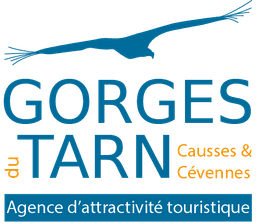

Report a problem or an error
If you have found an error on this page or if you have noticed any problems during your hike, please report them to us here:

